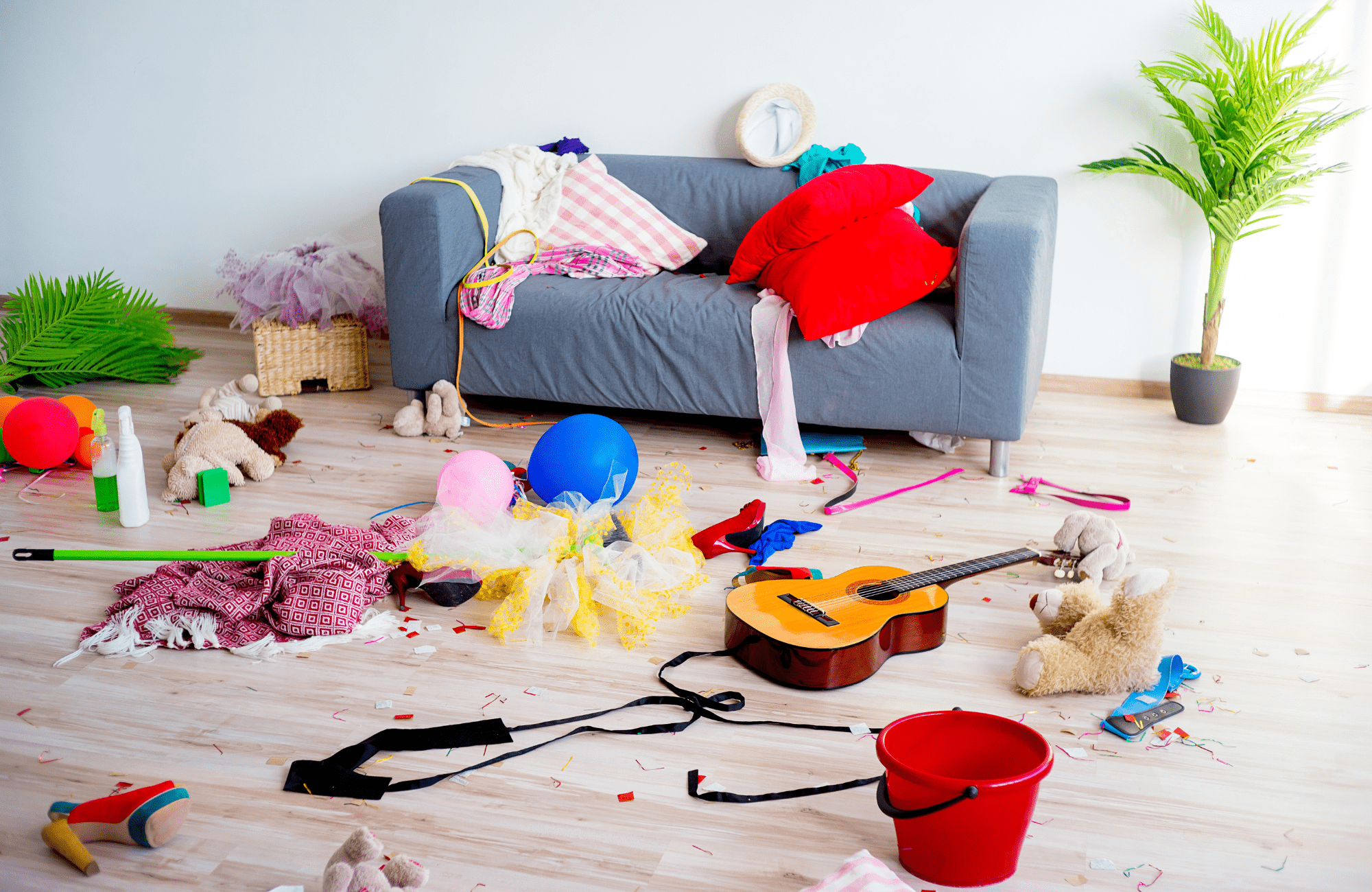It’s well into the new year, and one of the things that’s always on my goal list is to declutter and organize my home. The holidays are over, but I’m looking at all the stuff that accumulated or neglected. For my own sanity I like my surroundings to be organized, especially if I’m going to be cooped up inside for the long cold midwestern winter and spring. It’s been a work in progress for me over the years, but when life gets busy it’s one of the first things to fall to the wayside. With three kids ages five and under it doesn’t take long for the clutter to build up and finding the time can be tricky. I’m determined to get back on track this year so it’s time to get back to basics. Decluttering and organizing can be an exhausting, frustrating, rewarding, and therapeutic journey. Here are some pieces of advice that I’ve found helpful:
- Be Realistic
You didn’t accumulate everything overnight so don’t expect everything to fall into place right away. Decluttering is ongoing and organizing can take some trial and error to find out what works for you. As much as I’d love to be a minimalist (I’m too sentimental) or have my kitchen pantry organized like The Home Edit’s instagram pictures I know that it’s just not realistic for me, especially with three little kids. Us moms are busy and with kids it can feel like an uphill battle. It’s ok that it doesn’t look exactly like what’s in the magazines or on pinterest. I’m striving for progress over perfection.
2. Set the Pace
A quick google search will result in countless tips and tricks to declutter and organize. Since decluttering is ongoing you have to find a pace that works for you. Maybe one room a week is reasonable, or perhaps a daily 15 minute session for an entire year is more manageable. You can even get the kids involved and make a game of picking up for x amount of minutes or round up a certain amount of items to purge. Perhaps try a different approach and get rid of 1 or 2 items a day or just work on one drawer or shelf at a time. There are lots of decluttering calendars or challenges online to help pace yourself, provide ideas on what to declutter, and avoid burnout. Set a game plan to keep yourself on track and if you fall behind don’t get discouraged, just pick up where you left off or opt for a different method.
3. Everything Has a Home
The whole point of decluttering is for everything to have its own place. Imagine always putting something away in its designated spot or knowing exactly where to find it when you need it. Wouldn’t it be nice to not have mail and kids’ schoolwork taking over the kitchen table or find a rubber band when you need one? Think about the time saved when you aren’t digging through the pantry to locate the cookie cutters or how much easier it is to clean when everything is put away.
Logically you want to put like items with each other but what about the items that don’t have an obvious spot? I’ve found the cousin/coworker method to be useful. The cousins are part of the same category while coworkers are items used together. For example, do you keep your masking tape with its cousins like duct tape and superglue since they are all adhesives or do you keep them with the coworkers like the scissors and markers or with your painting and house project supplies? There is no wrong answer but it can help you and your household members stay consistent so everyone knows where exactly it goes.
4. Get Rid of Duplicates and the Just In Case Items
When decluttering you are bound to find multiples of items. If you can use them, great! However, sometimes there’s more than what you realistically need so you may as well clear up some space. On that same note, a lot of us keep things just in case. Will you be able to readily find that just-in-case item when you need it? Will you use it before it goes bad? Can it easily be replaced in the event you do need it? For example, how many spatulas or water bottles do you really use or how many sets of bed sheets are necessary? Just some food for thought as you pare things down.
 5. Don’t Rush Into Storage Solutions
5. Don’t Rush Into Storage Solutions
It’s really tempting to get the containers and drawer organizers when you are on a decluttering and organizing kick but you may want to hold off until you’re ready to get exactly what you need. In your decluttering you may find that you don’t need them after all and unused containers with no home just end up as clutter. This also gives you a chance to research and brainstorm solutions that work for you.
6. Let Go of the Guilt
I think the decluttering queen Marie Kondo said it best: “Does it spark joy?” Another question to ask yourself is “Would I buy this again?” If either of those answers are no then it’s likely safe to purge. If getting rid of something feels like you’re just throwing money away, remember that it’s already a sunk cost. The money was spent when you bought it, not when getting rid of it. Marie Kondo also has an answer to the guilt dilemma: give gratitude to the object for its service or the memories it represents. It may sound a bit silly but that can bring closure so you can move on.
7. Get It Out
So you’ve made some progress and are ready to say goodbye to some things. The next step is to get it out of your house. You’ve got the options to toss it, sell it, or donate it.
Tossing an item may imply that it goes to the garbage, but there are other ways to dispose of things too. It may feel wasteful throwing some things away but you can do a little research for proper disposal procedures or if there are sustainable ways to get rid of it. Electronics, batteries, clothing, infant and child car seats, and more can be taken to recycling drop off sites or retailers with a take back program. Sometimes it’s easier to part with things knowing it isn’t just going to a landfill.
Selling items can be a nice way to earn some extra cash. Garage sales, consignment stores, ebay, or facebook marketplace are some options. Just have a back up removal plan if it doesn’t sell so you aren’t sitting on it forever.
Donating is another great option. You can post online and utilize groups like your local Buy Nothing facebook group, donate to shelters, schools, or retirement facilities, or drop off at Salvation Army or Goodwill. You can get it out of your house and someone else can use what you don’t want anymore. You may even be able to claim a tax deduction.
8. Find Your Style
Once you’ve figured out what is going to stay and where it goes then you can figure out how you want to organize the space. I ran across this while listening to the Clutterbug podcast and thought it was helpful to analyze personal organizational methods. The podcast breaks it down into four styles: butterfly, bee, cricket, and ladybug. Butterflies want everything displayed out in the open and having access to it all. Bees have a method to the madness and are project-oriented but those unfinished projects and supplies in turn become clutter. Crickets prefer ultra-organized and strive for pinterest-perfect, but because they are meticulous they don’t always have the time to start or complete micro-organizing the space. Ladybugs make everything look great on the outside but all the clutter is hidden in closets and drawers. Essentially these types help you reflect on preferences regarding cleared surfaces or leaving your most used and practical items visible and accessible; and whether to macro or micro organize everything. Also, think about what styles work for your family. While you may be fine with stationary and craft supplies tucked away in a desk drawer, a child may have better luck maintaining those supplies on a wheeled cart. When you find your style you can start searching for organizing solutions that suit you and be more likely to stick to it.
Just remember: this is a marathon and not a sprint. Let your family in on your decluttering mission so they can also be on board and everyone can do their part. With a little time and teamwork you’ll start to see some progress in no time. Good luck, friends!










